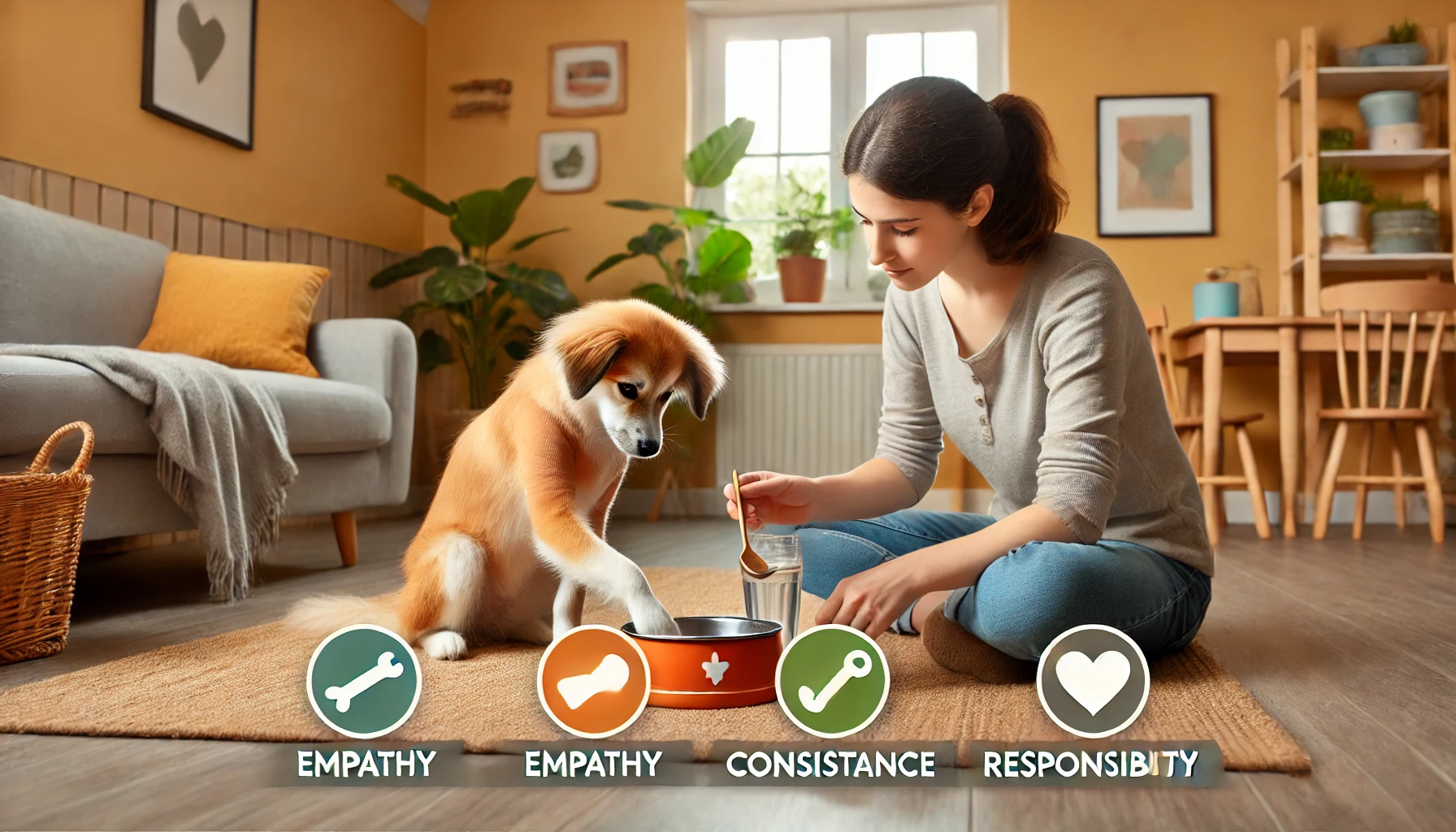How to Teach Young Children About Responsibility Through Pet Care
Caring for a pet is a wonderful way to teach children responsibility, empathy, and commitment. Pets depend on their owners for food, exercise, and love, providing children with a hands-on way to learn about daily responsibilities. By involving children in pet care, parents can help them develop discipline, patience, and a sense of accountability. In this article, we’ll explore fun and practical ways to teach responsibility through pet care at home.
Why Teaching Responsibility Through Pet Care is Important
- Encourages daily responsibility – Helps children understand the importance of consistency.
- Builds empathy and kindness – Teaches kids to care for another living being.
- Develops patience and routine – Shows children the commitment needed to care for a pet.
- Strengthens family bonding – Encourages teamwork in caring for a pet together.
- Prepares for future responsibilities – Builds habits of discipline and accountability.
1. Assign Age-Appropriate Pet Care Tasks
Giving children simple pet care responsibilities helps them learn accountability.
Activity Idea:
- Toddlers (2-3 years old): Help fill the pet’s water bowl, brush fur gently.
- Preschoolers (4-5 years old): Help measure and pour pet food, assist with short walks.
- Older kids (6+ years old): Clean pet bowls, refill food and water, help with grooming.
What Kids Learn:
- How to care for another living being
- The importance of daily responsibilities
- That pets rely on them for their well-being
2. Create a Pet Care Chart
A visual schedule helps children remember daily pet care tasks.
Activity Idea:
- Make a pet care checklist with tasks like “Feed the pet” and “Refill water.”
- Use stickers to track completed tasks and celebrate consistency.
- Rotate responsibilities among family members to encourage teamwork.
What Kids Learn:
- The importance of following routines
- How to take ownership of tasks
- Time management skills
3. Teach the Value of Consistency in Pet Care
Pets thrive on regular feeding, exercise, and affection, helping children learn commitment.
Activity Idea:
- Set reminders for feeding and playtime to show the importance of daily care.
- Explain how skipping a task affects the pet: “If we forget to feed the cat, she’ll be hungry.”
- Involve children in setting up a pet feeding station or designated play area.
What Kids Learn:
- The impact of their actions on others
- The importance of being consistent
- Accountability in following through with commitments
4. Encourage Gentle Handling and Empathy
Teaching children to be kind and gentle with pets strengthens their emotional intelligence.
Activity Idea:
- Show how to pet gently and respect the animal’s space.
- Teach how to read pet body language (e.g., a wagging tail vs. a tucked tail).
- Role-play as the pet and ask, “How would you feel if someone pulled your ears?”
What Kids Learn:
- How to be patient and kind with animals
- The importance of respecting boundaries
- The connection between emotions and actions
5. Involve Children in Vet Visits and Health Care
Helping children understand pet health teaches them about long-term responsibility.
Activity Idea:
- Let children ask the veterinarian questions about pet health.
- Teach them about vaccinations, grooming, and keeping pets healthy.
- Explain why regular check-ups are important for pets, just like for people.
What Kids Learn:
- The importance of taking care of health needs
- That responsibility includes long-term care, not just daily tasks
- How to show love by keeping pets healthy
6. Make Pet Care Fun and Engaging
Turning pet care into an enjoyable experience encourages active participation.
Activity Idea:
- Have a pet bath day where children help with grooming.
- Set up a pet obstacle course or fun games for exercise.
- Allow children to make DIY pet toys or treats.
What Kids Learn:
- How responsibility can be enjoyable
- The importance of play and exercise for pets
- That caring for pets is rewarding
7. Explain the Lifelong Commitment of Pet Ownership
Helping children understand that pets are a long-term commitment builds responsibility.
Activity Idea:
- Talk about how pets depend on their owners every day.
- Discuss how owning a pet means caring for them for many years.
- Watch videos or read books about real-life pet care stories.
What Kids Learn:
- The serious responsibility of having a pet
- That pets are part of the family, not just playmates
- The importance of long-term commitment
8. Praise and Reinforce Responsible Pet Care Behavior
Recognizing children’s efforts encourages them to take pet care seriously.
Activity Idea:
- Say, “You did a great job feeding the dog today! She looks happy.”
- Allow children to choose a special treat for the pet as a reward for consistent care.
- Celebrate milestones, like “You’ve been helping with the cat’s water for a whole week!”
What Kids Learn:
- That responsibility is valued and appreciated
- The importance of consistency in care
- That small actions make a big difference in a pet’s life
Final Thoughts
Teaching young children about responsibility through pet care helps them develop discipline, empathy, and accountability. By assigning age-appropriate tasks, encouraging consistency, and making pet care fun, parents can guide children in learning valuable life skills while strengthening their bond with their furry friends.
